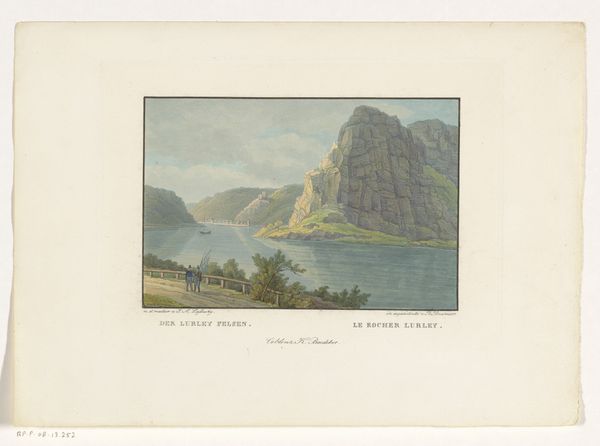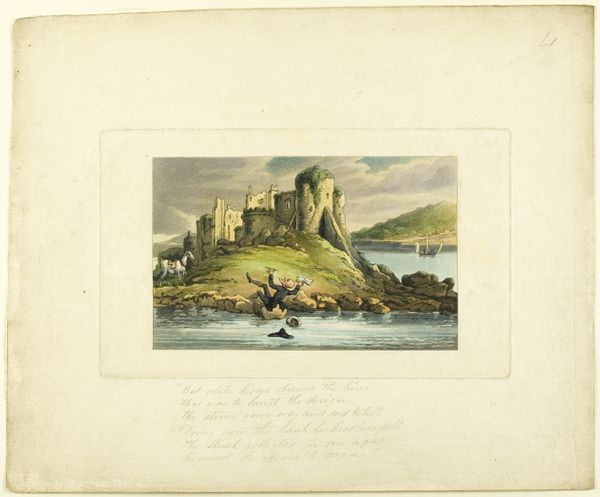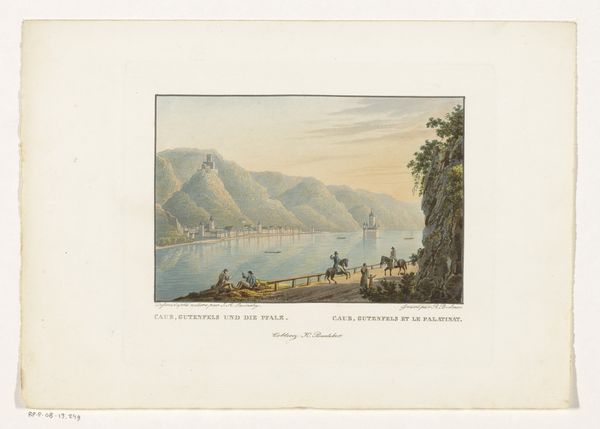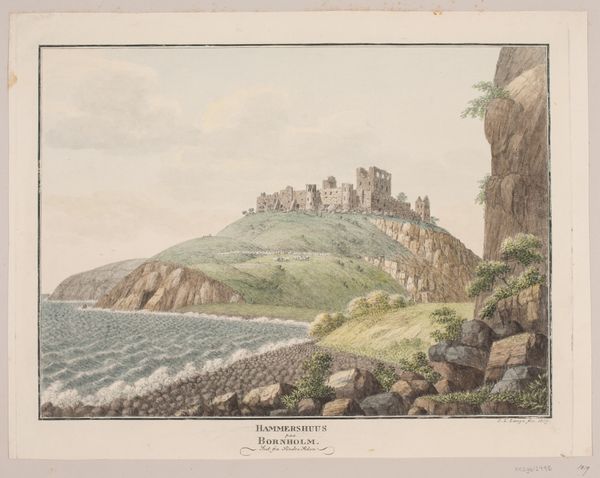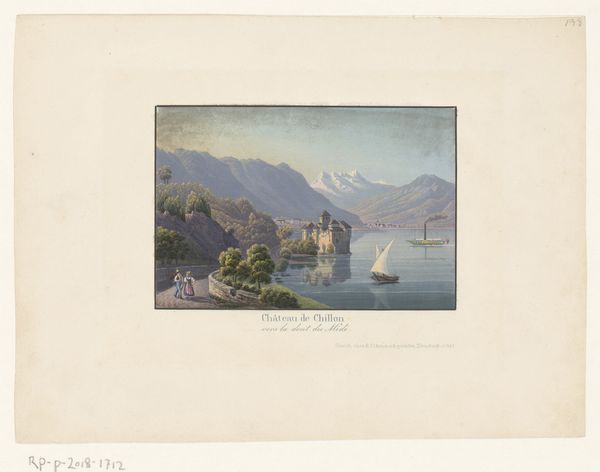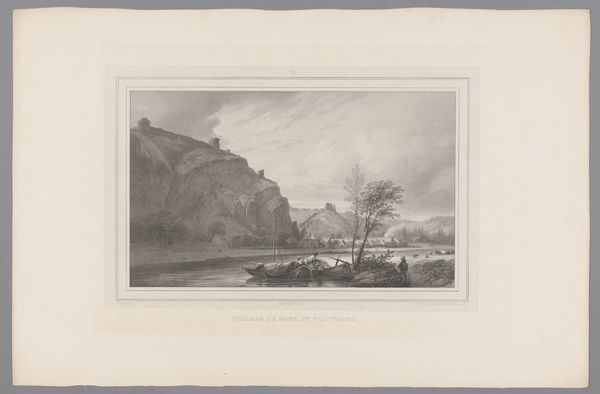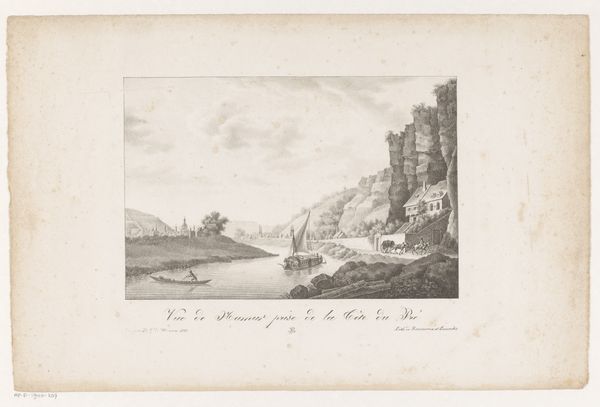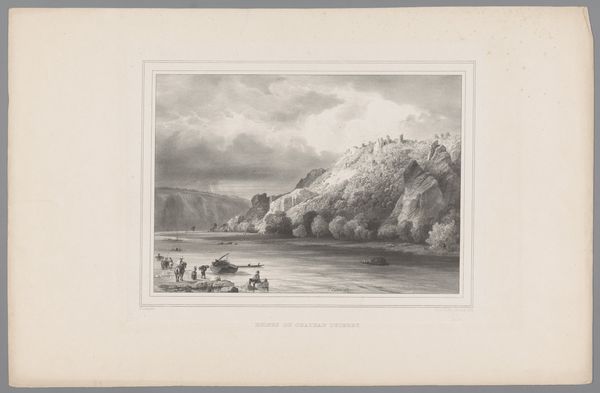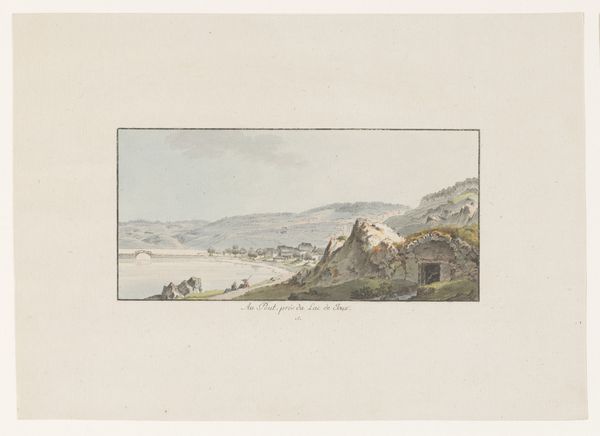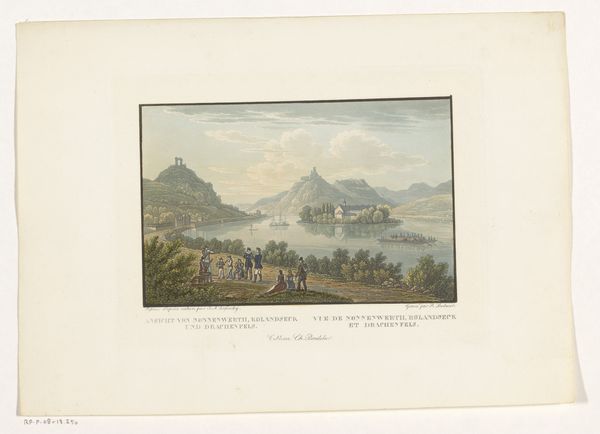
Dimensions: height 125 mm, width 165 mm
Copyright: Rijks Museum: Open Domain
Curator: Let's take a look at this watercolor work, "Gezicht op de burcht Rheinstein" – or "View of Rheinstein Castle." It’s estimated to have been created between 1832 and 1872 by Rudolf Bodmer. What strikes you first? Editor: Well, immediately, the mood. It’s dreamy, almost wistful, like a half-remembered fairytale. And the way the castle seems to grow right out of the rock… incredible. What kind of stories are baked into that image, I wonder? Curator: Rheinstein Castle has quite the story. Destroyed in the 14th century, it became a symbol of Romanticism when Prince Frederick William Louis of Prussia purchased and rebuilt it in the early 19th. So this image really taps into the cultural fascination with ruins and restoration that was so prevalent. The castle symbolizes a return to a glorious past. Editor: Right! You see, for me, the horse-drawn carriage and the tiny figures on the road become really important here; they're like a bridge, connecting us, the viewers, with the historical scene and the idea of revisiting history itself. Nostalgia, much? Curator: Precisely. Bodmer uses watercolor to enhance that very sensation. The lightness and translucency give the scene an ethereal quality, perfectly suiting the Romantic aesthetic. Look at how the mist hangs around the distant hills. That's typical romantic symbolism that emphasizes longing for something just beyond reach. Editor: Yes, and that light palette keeps it from being heavy, doesn't it? The image hints at adventure and legend without actually getting weighed down by them. There's movement there, that horse trotting toward… somewhere. It allows for hope! Curator: It certainly encapsulates the 19th-century desire to reclaim a legendary past, both literally, in the castle's restoration, and symbolically, within the cultural memory. Editor: It’s amazing how this artist manages to convey a sense of yearning through landscape. Gives you a soft place to consider where the past is *really* present. Curator: Agreed. And as this image indicates, sometimes what’s past is prologue and what has been broken can be beautifully rebuilt and remembered.
Comments
No comments
Be the first to comment and join the conversation on the ultimate creative platform.

